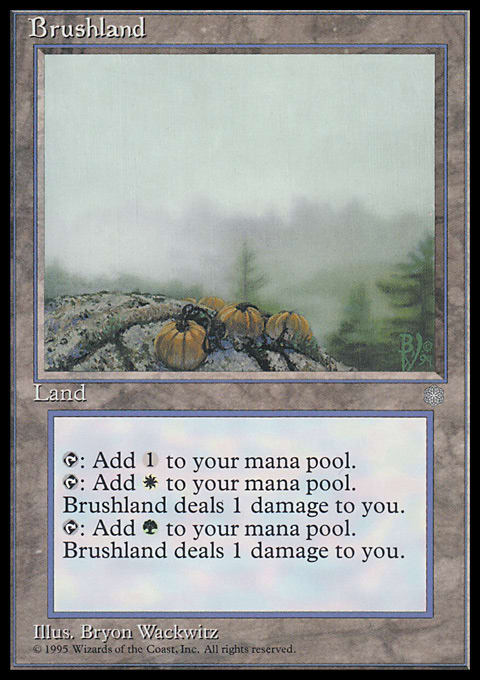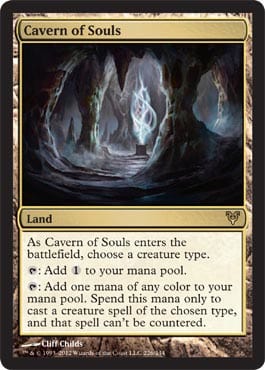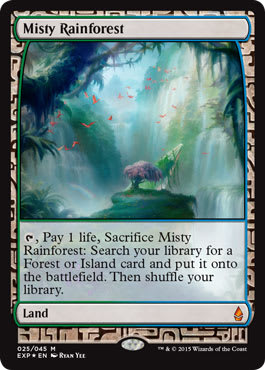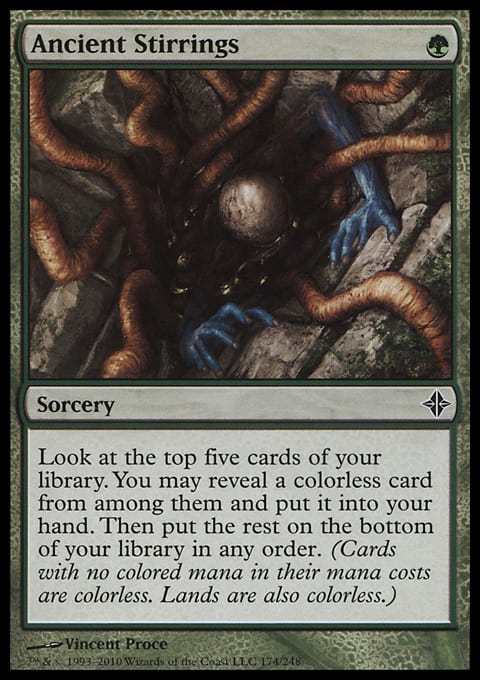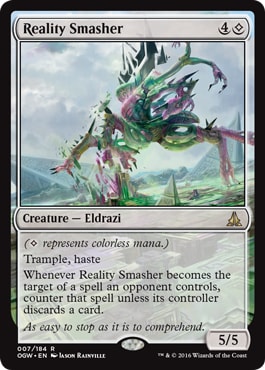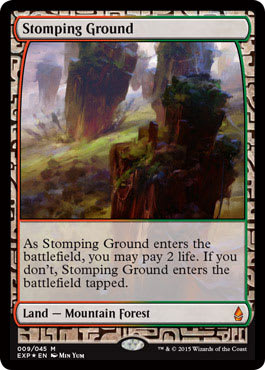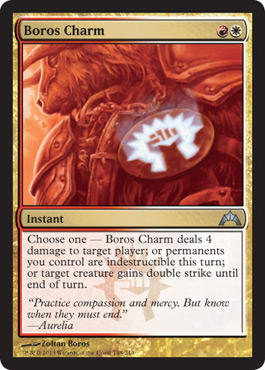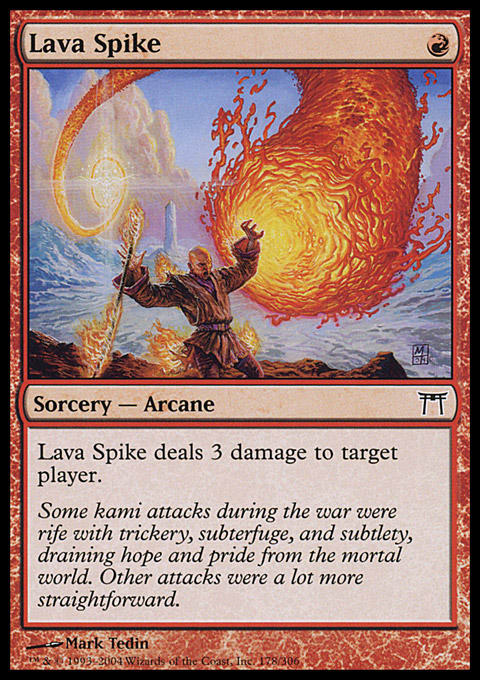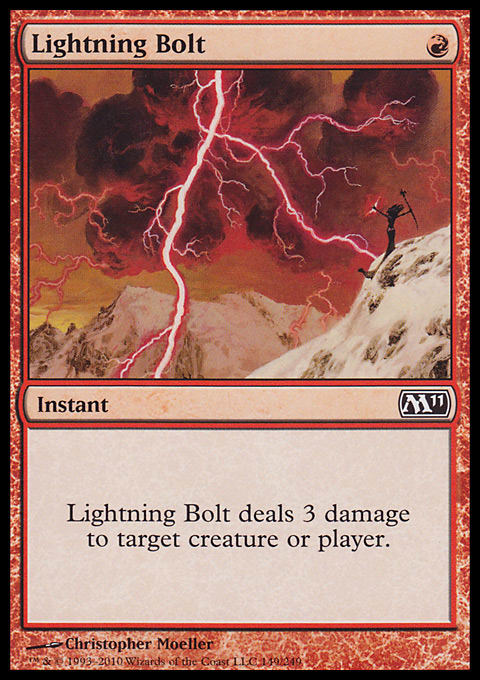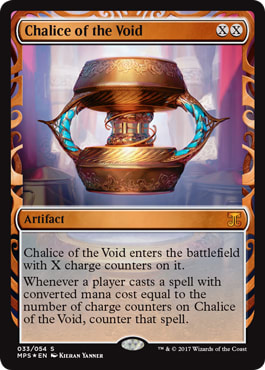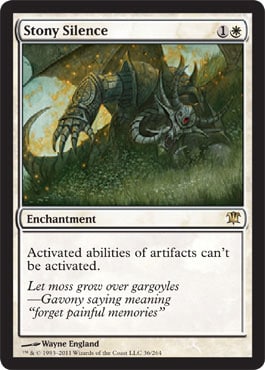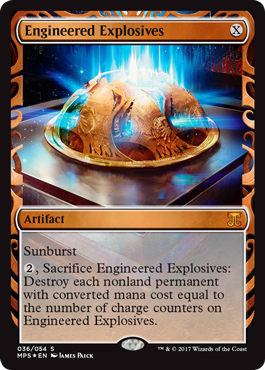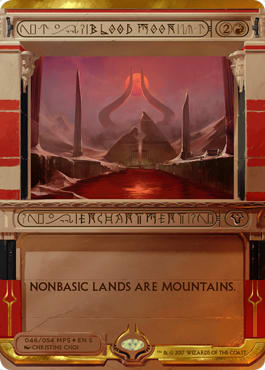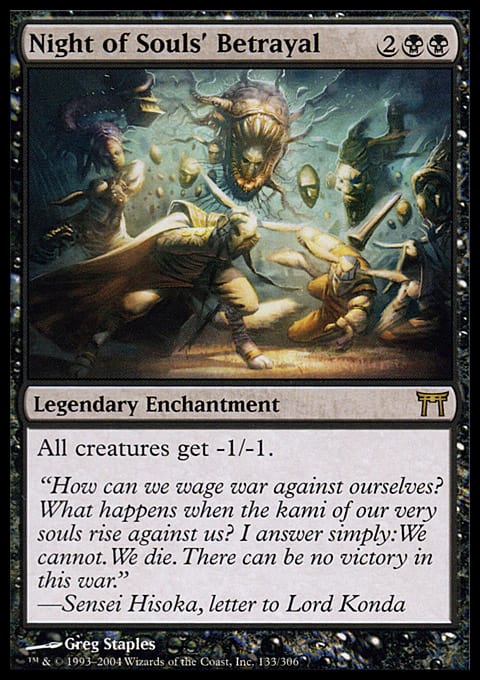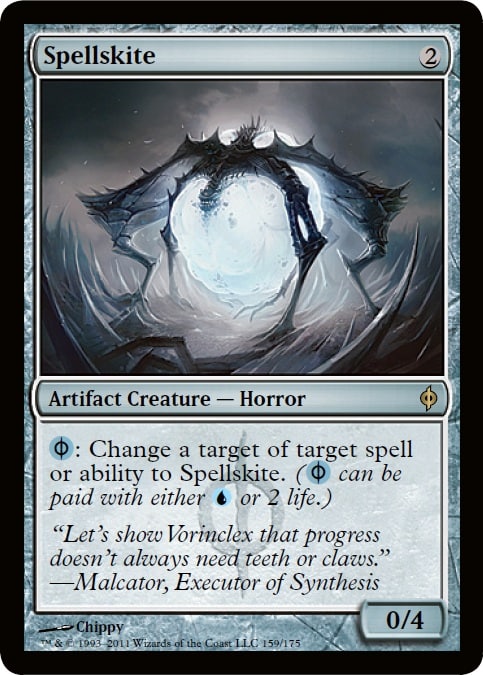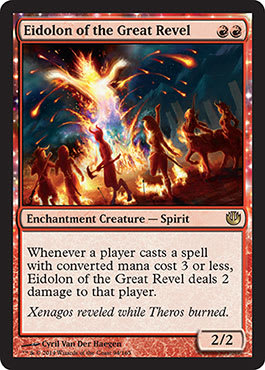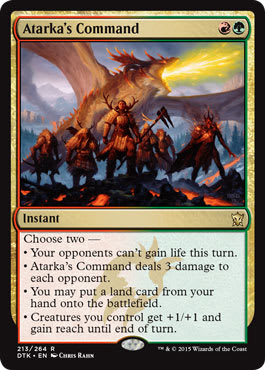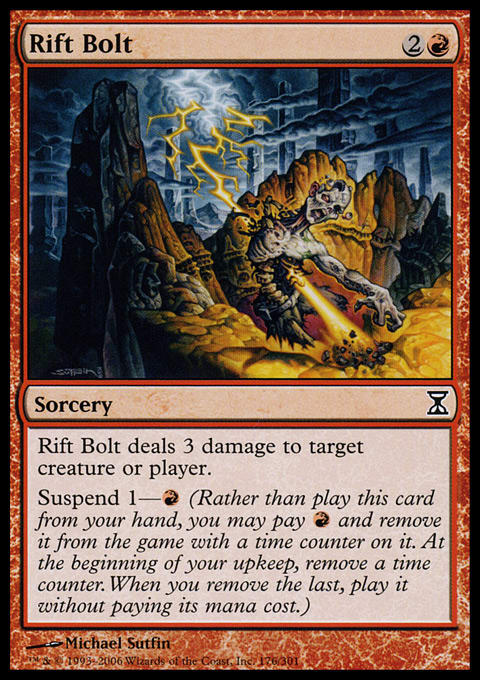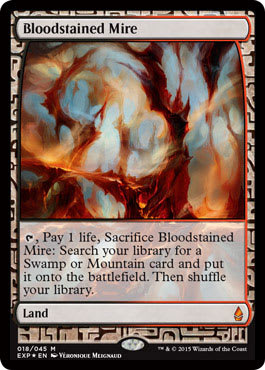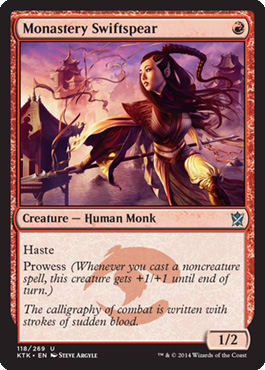Mulligans get such a bad rap. They just want to give you another chance at winning Magic in a game you would’ve otherwise lost. Walking through a tournament hall there are inevitably people sharing bad beat stories to the tune of “Gah! I mulliganed both games and lost!”, and, while it’s easy to sympathize, it is hard for me to empathize with the mentality.
Before playing Magic, I was a relatively committed Yu-Gi-Oh! player. All talks comparing the two games aside, the ability to mulligan in Magic was one of the biggest selling points for me when contemplating the switch. In Yu-Gi-Oh! there were often unplayable hands or hands which put the player at such a significant disadvantage it was almost better to concede in order to save time. This insight has led me to mulligan very aggressively and not hesitate to start with one less card in hand if it means I get a ‘re-do’ for the way the first few turns of the game play out.
This past weekend at Grand Prix Charlotte I locked into a deck requiring the pilot to mulligan a fair bit — Bant Eldrazi.
Bant Eldrazi ? Modern | Emma Handy, Grand Prix Charlotte
- Creatures (28)
- 2 Birds of Paradise
- 2 Spellskite
- 4 Drowner of Hope
- 4 Eldrazi Displacer
- 4 Matter Reshaper
- 4 Noble Hierarch
- 4 Reality Smasher
- 4 Thought-Knot Seer
- Spells (8)
- 4 Path to Exile
- 4 Ancient Stirrings
- Lands (24)
- 2 Forest
- 1 Plains
- 1 Wastes
- 1 Breeding Pool
- 1 Hallowed Fountain
- 1 Misty Rainforest
- 1 Temple Garden
- 2 Brushland
- 2 Yavimaya Coast
- 4 Cavern of Souls
- 4 Eldrazi Temple
- 4 Windswept Heath
- Sideboard (15)
- 1 Stubborn Denial
- 2 Negate
- 3 Engineered Explosives
- 3 Grafdigger's Cage
- 2 Timely Reinforcements
- 1 Dismember
- 2 Stony Silence
- 1 World Breaker
The deck itself was quite intriguing and was more-or-less spoon-fed to me from the deck’s creator himself, Todd Stevens.
This particular deck is relatively straight forward (“Just play big creatures and smoosh ‘em”), but of all the Modern decks I’ve played this one is one of the most reliant on its opening hand.
When I first picked up the deck, the only advice on playing it Todd gave me was, “Mulligan anything without mana acceleration or Ancient Stirrings.” And it was very sound advice. Most cards in the deck cost three or more mana, and Modern is too quick for a deck to not do anything before the third turn.
The aforementioned advice is a great blueprint for how to make the deck operate properly; but what about sculpting a game around the opponent’s game plan?
Remember, when playing Magic and deciding on an opening hand, there is a point where one has to consider if the opening hand is at all playable, and if it is playable in the context of how a game will play out.
After losing Game 1 during Round 10 of the Grand Prix, I had the following opening hand staring up at me against Storm in the second game of our match:
The first thing to think about here is the hand is perfect! It has reasonably-sized creatures, the mana to cast them, a bit of digging, and a plan of action. When considering how likely it is the opponent is able to either disrupt our game-plan somehow or combo off on turn three this hand becomes a pretty clear mulligan.
Storm ? Modern | James Zornes, 2nd Place, SCG Classic
- Creatures (4)
- 4 Goblin Electromancer
- Spells (36)
- 1 Increasing Vengeance
- 4 Desperate Ritual
- 4 Gifts Ungiven
- 4 Manamorphose
- 4 Pyretic Ritual
- 4 Thought Scour
- 2 Empty the Warrens
- 2 Grapeshot
- 3 Past in Flames
- 4 Gitaxian Probe
- 4 Serum Visions
- Lands (20)
- 1 Mountain
- 3 Island
- 2 Misty Rainforest
- 3 Steam Vents
- 3 Sulfur Falls
- 4 Flooded Strand
- 4 Scalding Tarn
- Sideboard (15)
- 3 Ancient Grudge
- 1 Deglamer
- 1 Ancient Grudge
- 1 Naturalize
- 1 Breeding Pool
- 1 Nature's Claim
- 3 Anger of the Gods
- 1 Empty the Warrens
- 3 Shattering Spree
When evaluating an opening hand it is incredibly important to understand the context of all of the cards in the given matchup. Having an opening hand with Stony Silence lacking reasonable pressure is not a good enough seven-card hand against an artifact deck which kills quickly like Robots; despite being a respectable grip to keep against a slower artifact deck in the same vein as Lantern Control.
This segues quite nicely into one of the most important aspects of making mulligan decisions: Have a plan.
Have a Plan
Whenever looking at an opening hand it is incredibly important to evaluate what the plan for the first few turns of the game may be. A hand with spells and the lands to cast them sounds like something worth keeping when said quickly, but what if all of the spells cost four mana; if they all cost one mana?
Take a second to imagine playing the following Burn deck against Ad Nauseum in Modern:
Burn ? Modern | Jory White, SCG Modern Open, 3rd Place
- Creatures (17)
- 1 Grim Lavamancer
- 4 Eidolon of the Great Revel
- 4 Goblin Guide
- 4 Monastery Swiftspear
- 4 Wild Nacatl
- Spells (24)
- 4 Atarka's Command
- 4 Boros Charm
- 4 Lightning Bolt
- 4 Searing Blaze
- 4 Lava Spike
- 4 Rift Bolt
- Lands (19)
- 2 Mountain
- 2 Arid Mesa
- 2 Sacred Foundry
- 2 Stomping Ground
- 3 Copperline Gorge
- 4 Bloodstained Mire
- 4 Wooded Foothills
- Sideboard (15)
- 2 Dragon's Claw
- 2 Grafdigger's Cage
- 1 Grim Lavamancer
- 2 Ancient Grudge
- 1 Deflecting Palm
- 3 Destructive Revelry
- 4 Skullcrack
Ad Nauseam ? Modern | Andreas Ganz, Grand Prix Charlotte 1st place
- Creatures (5)
- 1 Laboratory Maniac
- 4 Simian Spirit Guide
- Spells (35)
- 1 Lightning Storm
- 3 Pact of Negation
- 3 Spoils of the Vault
- 4 Ad Nauseam
- 4 Angel's Grace
- 4 Serum Visions
- 4 Sleight of Hand
- 4 Phyrexian Unlife
- 4 Lotus Bloom
- 4 Pentad Prism
- Lands (22)
- 1 Island
- 1 Plains
- 4 Darkslick Shores
- 4 Gemstone Mine
- 4 Seachrome Coast
- 4 Temple of Deceit
- 4 Temple of Enlightenment
- Sideboard (15)
- 1 Pact of Negation
- 1 Slaughter Pact
- 3 Hurkyl's Recall
- 1 Boseiju, who Shelters All
- 2 Thoughtseize
- 3 Spellskite
- 4 Leyline of Sanctity
After cobbling together a lucky Game 1 victory, you find yourself faced with the following hand:
Your opponent picks up their hand one card at a time and upon seeing the second card (of seven!!) the player declares “I’ll keep”. This should set off some alarm bells.
Very few cards in Magic are impactful enough to make a hand a keep after only seeing two cards. This implies that whatever card the opponent has seen is something which will invalidate multiple cards out of your deck. There are only a handful of cards capable of that in Modern and having those types of cards on your radar will help bring your Modern game up:
When looking at cards in this particular category it becomes pretty easy to narrow the list down to cards that actually do something against Naya Burn.
The next step is figuring out which of these cards would actually be in the Ad Nauseam deck and how impactful they are against Burn.
Outside of Simian Spirit Guide and the various five-color mana producers (all of which are finite resources) the Ad Nauseam deck doesn’t have very many sources of Red and the Ad Nauseam deck itself is likely hurt by Blood Moon. It becomes pretty easy to deduce Blood Moon is not the card in the opponent’s hand.
Spellskite is deceptively low-impact against the Burn archetype. While the card itself is not bad and does gain a reasonable amount of life, over half of the spells in Burn don’t actually have the option to be redirected to Spellskite. Spellskite doesn’t hurt Burn in a way crippling enough to warrant your opponent keep a hand based off of the first two cards.
Good ol’ EE has been the bane of ‘fair’ aggressive permanent-based decks for a long time. That being said, the low-density of actual permanents in Burn knocks this one off the list almost instantly.
Chalice of the Void is an interesting one. It hasn’t often shown up in the Ad Nauseam archetype but could possibly work within the deck. Chalice of the Void is the type of card a deck plays if it has trouble dealing with a pile of 1-drop, 2-drop, or even 0-drop spells from a given archetype while not playing any cards at that converted mana cost within its own shell.
Under these circumstances it becomes clear to see an Ad Nauseam player would set Chalice of the Void to X=2 in order to try and blank right around half the spells in the Burn deck and setting Chalice on 0 or 1 would blank too many important spells in Ad Nauseam’s library. This isn’t a reasonable sequence due to the fact that this would cost the Ad Nauseam player four mana. Without Pentad Prism being involved (a 2-drop that player would likely board out if a Chalice for 2 is part of the game plan) this means the Ad Nauseam player will not be casting Chalice of the Void for 2 until that player’s fourth turn of the game. This is when the Ad Nauseam deck tends to try and combo off via Pentad Prism or Lotus Bloom. At that point, playing a relatively narrow hoser effect seems a bit narrow. After these considerations, Chalice of the Void is out.
Ding! The natural conclusion to arrive to is the second card the Ad Nauseam player saw that helped them decide not to mulligan is Leyline of Sanctity! Leyline of Sanctity turns off a good number of the spells in the Burn deck without taking any mana (read: time) from the Leyline’s controller. It is also a bit of a given the first card your opponent drew in the opening hand was a Scry-land, as it is a land worth slightly more than a single card (via the virtual card advantage that the Scry provides), thus determining the player will have a bit more time to dig and find missing combo pieces.
Now that this information has been made clear, what to do with it?
When looking at a pile of Burn spells which target the opponent (Mountain, Sacred Foundry, Stomping Ground, Boros Charm, Boros Charm, Lava Spike, Lightning Bolt for reference) it becomes relatively clear the decision is simple to mulligan down to six cards.
After mulliganing, this is what stares back at you:
“Maybe the soul read was wrong. Maybe the opponent doesn’t actually have a Leyline of Sanctity. Is my gut instinct worth going down to five cards in my opening hand this game?”
Yes. This hand doesn’t do anything in the face of a Leyline of Sanctity. If the logical conclusion is one thing, the ‘feel bads’ of going down to five cards doesn’t erase that. Down to five!
“Wow. Going down to four. Should have just kept the opening seven and hoped our opponent doens’t have a Leyline.”
“We lit fam.”
The opponent then drops three copies of Leyline of Sanctity on the table before losing the game to a lack of gas, bevy of creatures, and Eidolon of the Great Revel triggers.
This is an actual scenario that happened to me at a Starcitygames.com Classic shortly after Treasure Cruise was printed. This cemented the importance of mulligan decisions for life. Despite the amount of unknown variables associated with mulligans, remember to utilize all of the information available and harness the resources you have to make the game winning decision.













